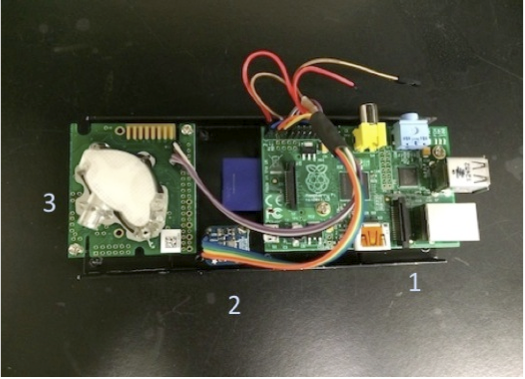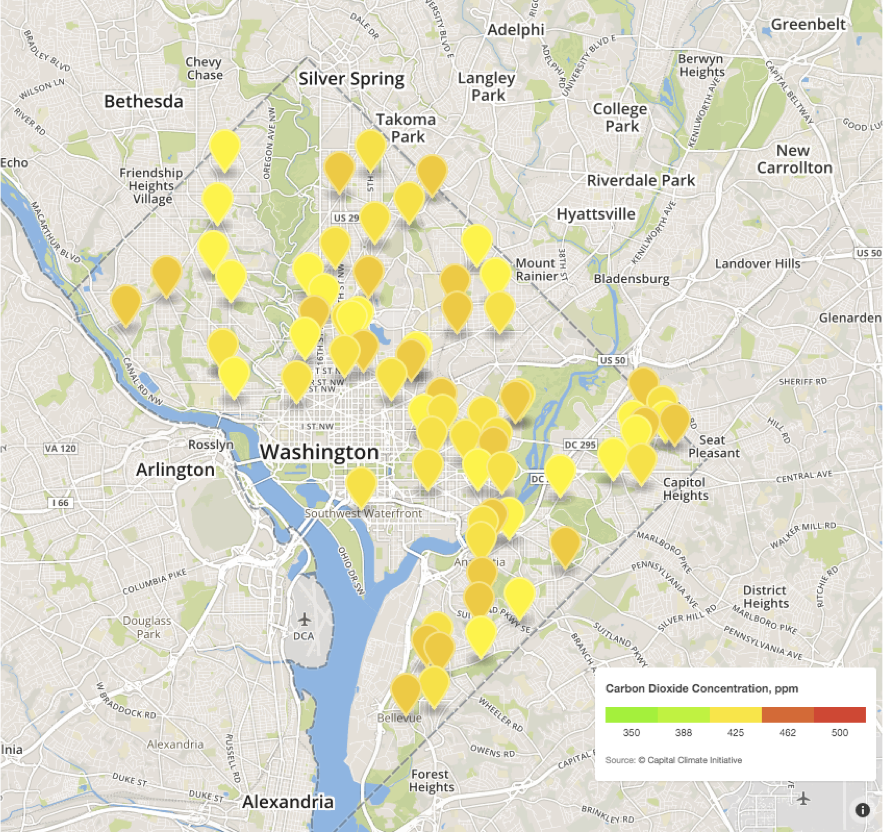The Capital Climate Inititaive
Climate Science and Public Engagement
From the vantage point of academic science, it is difficult to believe that anyone could doubt the reality of climate change brought on by man’s activities. Yet, study after study confirms that many people in America are dismissive of the threat from global warming, convinced that -if it occurs at all- it will happen to someone else and that it will be felt more acutely somewhere else. For example, the Six Americas project coordinated by Yale University set out to evaluate American attitudes towards climate change. In their 2010 snapshot, sixteen percent of those polled were characterized as “Dismissive - global change is not happening and is probably a hoax” (a number that had doubled since 2008). Only ten percent were “Alarmed – Global warming is happening, caused by humans, and a serious and urgent threat “ (a category that has gone down from 18% in 2008).
The world is urbanizing rapidly. Last year, more of the world’s population lived in urban areas (54%) than in rural areas, and more than twice as many people in 2014 lived in urban areas than in rural areas than did in 1950 [3]. Although climate change is a global phenomenon, based on this distribution of population as well as the fact that many urban areas are close to sea level, and thus will bear the brunt of rising seas and more intense storms, climate change’s effects will be felt more acutely in these urban areas. Of course, cities are also responsible for a large portion of greenhouse gas emissions (in excess of 75% by one estimate [4]). Thus, to bring awareness of climate change to the human dimension, it is imperative to target these urban populations and provide them information and data that will guide their acceptance of the reality of a changing climate and influence their daily decisions.
We, and others, have explored the utility of these NDIR sensors for ambient measurements of CO2 concentrations. As noted at the outset, the purpose of this project is to showcase a demonstration project of a city-wide, greenhouse gas sensor network based on NDIR Sensors. We will also develop a new, state of the art, Greenhouse Gas Sensor Facility on the roof of the recently opened Science and Engineering Hall. Data from all of the sensors will be collected onto a university server and will be web accessible. In addition, several public interfaces to the data will be constructed. One will be via a web portal using GIS tools provided by our collaborating partners at Mapbox. In addition, data will be presented in the centrally located lobby of the SEH for engagement of both University personnel and visitors to this showcase facility. Each component of the research plan is detailed below.
Our current configuration, shown in Figure 1, consists of a RaspberryPi microcontroller (the latest sensors use Model B+), a K30 sensor from Senseair, and a Bosch combination pressure/temperature sensor. Because the NDIR signal is influenced by both temperature and pressure, it is our hypothesis that adding these measurements will improve the accuracy and precision of the K30 units beyond the manufacturer’s specifications. Both sensors communicate with the Raspberry Pi using the built in I2C serial interface. The Raspberry PIs are equipped with Ethernet ports and we have experimented with power over Ethernet (PoE) for some deployments. In other prototypes, we have used “nano-sized” USB Wi-Fi adapters from Edimax. Students have been charged with assembling simple wiring harnesses for the electronics as well as constructing chassis for mounting all of the components. (Learning important life skills in riveting, soldering, and the magic of heat shrink along the way.) Programming on the PiOxide units is done in Python and is largely based on open-source repositories maintained by component vendors (such as Adafruit CO2meter).
The assembled sensor packages consume only a couple of watts with Wi-Fi active, and a little less without. Nonetheless, providing power to the sensors on deployment (and negotiating the wireless security remotely around campus) has been a challenge. In our current design, we use a small (10W) solar cell connected to two, seven amp-hour lead acid batteries in series to provide nearly continuous power for a diurnal cycle. We have also experimented with a variety of weatherproof housing units, and have settled on a ≈0.5 ft3 electrical enclosure from Bud Industries. As detailed in the budget, each of the assembled sensor units is anticipated to cost ≈$400. We wish to build and deploy 50 of these; 25 in each year of the proposed work.




